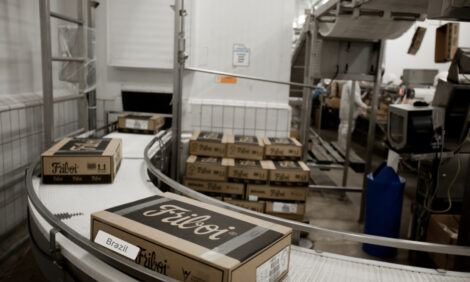



AFBI Study on Methane Emissions in Ruminants
UK - Increasing concentrations of greenhouse gases in the atmosphere such as carbon dioxide, nitrous oxide and methane, among others, have contributed to an increase in the earth’s atmospheric temperature, an occurrence known as global warming. The increasing emissions of these trace gases are largely due to human activity.One of the main agricultural sources of methane emissions is livestock farming. Methane is produced in the digestive tract of cattle and sheep (mainly in the rumen) as a by-product of the microbial breakdown of feed. Typically, a mature cow produces around 500 litres of methane per day. However, this amount is very dependant on dietary factors. Besides its global warming implications, methane output by livestock represents a 6% loss of the gross feed energy intake during production. Therefore, improving the efficiency of energy use in dairy cows by reducing methane emissions is of growing interest.
Measurement of methane emissions from individual animals has traditionally been made with open-circuit respiration chambers, which are highly accurate and reliable for animals offered indoor diets. However, these chambers are not as suitable for evaluating emissions for grazing animals. In recent years a new technique that makes use of an inert gas (sulphur hexafluoride, SF6) has been developed for determining methane emissions from cattle and sheep under grazing conditions.
The SF6 tracer technique is based on the use of a controlled release bolus containing SF6 gas, which is inserted into the animal’s rumen. A representative sample of the gas produced by cows when they exhale is collected from the cow’s mouth and nostrils into a canister, during a 24 hr period. The concentrations of methane and SF6 inside the canister, determined in the laboratory, are used to estimate the daily methane emissions of each cow.
Researchers from the Ruminant Nutrition Unit of AFBI Agriculture Branch are currently conducting a study aimed at validating the SF6 technique for measuring methane emissions. The study is also examining the effects of yeast supplement on methane production. Yeast products are being used in ruminant diets to improve rumen fermentation, feed intakes and animal performance. However, there is very little information on the effect of commercial strains of yeast on methane emissions.
The study involves 20 dairy cows of different ages (heifers and cows) and breeds (Holstein Friesians and Norwegian crosses). Throughout lactation, the cows are being offered 4 different diets (2 different concentrate levels, with or without yeast supplementation) for 6 week periods. Daily methane emissions will be measured using the SF6 canisters and animal chambers simultaneously, allowing for comparison of the two techniques.
Once validated, the SF6 technique can also be used in other ruminants such as beef cattle and sheep to asses the environmental impact of ruminant livestock. Since this technique can be used in a grazing environment on a large number of animals simultaneously, it can aid in the evaluation of different methane mitigation strategies.
This study is part of a larger project funded by the Republic of Ireland Stimulus Fund involving Teagasc and University College Dublin which aims to examine the effects of different dairy production systems on methane emissions and to identify feeding and management regimes which will reduce the environmental impact of dairy farming whilst maintaining animal production and welfare.
TheCattleSite News Desk


